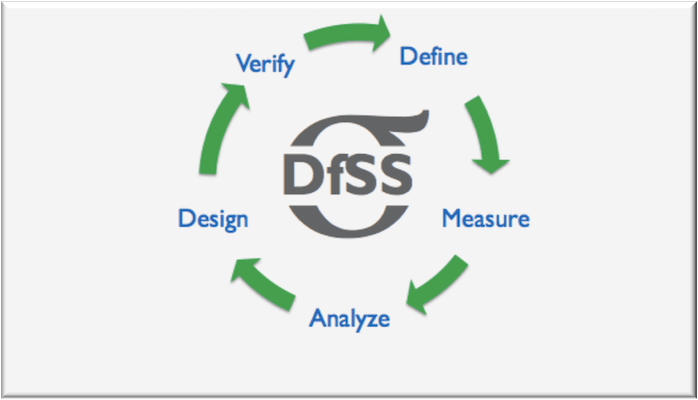One Shift at a Time
Let’s first make an assumption; that the personnel on the production floor were properly informed in absolute terms what the goals of the plant and the company might be and properly empowered to assess situations as they presented themselves. This is not a given, for all too often the people and their abilities to think critically on the production floor are considered as not much more than the equipment they operated.
If such was the case – that the personnel on the production floor were properly informed, capable, and empowered to make decisions and to recognize and realize opportunities for improvement – then what if making process improvement was not the in sole purview of corporate process improvement experts? What if, the ability to improve processes was placed in the hands of the true owners of the process; those who are working the process every day? What if those working the process were empowered to see the challenges, the risks and opportunities, and were able to make the decisions that were in the best interests of plant production and the company in real-time? Would this newfound and profound agility on the production floor be welcome or would it be discouraged?
When companies are first founded, their spirit and nature is that of an entrepreneurial organization. They are agile and nimble; able to assess a situation and make decisions in real-time. And they can do this because their organizational structure is very compact. But as they grow, they lose this compactness and put in place rigid standards for operation, often too rigid and also too inflexible. They take away decision-making in the field and consolidate it further up the chain of command. And in doing so, they also lose touch with what is actually happening on the production floor and are unable to see the challenges (both opportunities and threats) that might exist.
But why does this have to be?
It doesn’t, and it shouldn’t.
The ability to observe and recognized external influences and changes in business factors more quickly and being able to react to the fluidity of circumstances as they unfold – even to get ahead of them – will offer perhaps the most important of competitive advantages. After all, time is the only fixed variable. There are only 24 hours in a day. And the organization that uses that 24 hours more effectively will have the competitive advantage.
Offering greater agility by adapting to current market changes in as close to real-time as is possible is the opportunity, but with the increase in the complexity of the daily life of the plant operators present challenges in strategy execution as circumstances are changing more quickly and the pressures to make good decisions faster become more critical to success.
So if a company is going to push for an increased level of autonomy to the production floor, improved communication protocols – top to bottom and bottom to top – will be essential and will foster operational agility; from corporate to the business unit, the business unit to the plant, the plant to the production floor, the production floor to the shift, and the shift to subsequent shifts.
Of these, strategy execution will be found in the efforts and of the production floor; and in the shifts in particular. In this vision of the future, its production goals will be communicated to the production floor and it would be up to those in production to attain those goals in the best manner they believe is possible. This activity would also include a “Management of Chance” (MoC) log which will communicate corrective actions taken and recommended easily across shifts and throughout the plant.
The basis of sound decision-making can be found in the soundness of the information upon which those decisions will be made. Information (data with context) acquisition and the involved processes will have to be standardized and harmonized across the various sources. And the user-interfaces will have to be simple to use to encourage engagement and discourage unauthorized workarounds; if it’s not simple, people will not use the system or use them properly.
As information is being harvested in real time, background processes (perhaps leveraging artificial intelligence and machine learning) will need to evaluate and generate alerts and assign tasks as appropriate; at the very least offering a dashboard to the user to monitor the health of the plant and its production activities. This harvested information, with the entire history of the operations and activities in the plant, will also create a “single source of truth” and allow for on-demand documentation that is timely, complete, and accurate.
The system will need to offer drill-down and drill-around capabilities for obtaining the details for what is appearing on the dashboard so that decisions on preventative and corrective actions can be made and effected. And there needs to be easy methods for searching and reporting to pass information across the enterprise and to find historical records of activities and experiences.
But implementing a system that will achieve all of the above and deliver the benefits will require some up-front thought and work.
You will need consulting expertise from people who know the system so they can understand the business factors being faced and to help clearly and concisely define the success criterion for implementing the system; first on a corporate level, then drilling down to the plant level.
And, of course, the availability and engagement of those who will be making decisions from the information in the system will need to be involved to ensure they are getting the information they need when they need it, in a manner they can understand. And the operators will also need to be involved to ensure system buy-in is achieved by making them a key part of the process. After all, they will be the ones feeding the information into the system and using it to collaborate within, between, and across shift operations.
The result of this effort will be the creation of a system implementation blueprint. Since each plant is different, it will be important to consider and accommodate local adaptations to best support the activity at each plant while still maintaining alignment to the over-arching corporate strategy.
This means, to the extent that configuration and operational protocols can be standardized and harmonized, they should be. But that it is also necessary to allow each plant to thrive, to individually be the best that it can be; but tethered to the whole organization.
What results might you expect from these efforts? At a minimum;
- Understanding of what is important to the company and what is important to the individual plants.
- Standardized and harmonized way of capturing information so that it can be evaluated and informed decisions can be made more soundly and quickly from a single source of truth.
- Ability to see and understand the health of a plant and to take remedial action more quickly.
- Compress time by being able to react to changes in circumstances and business factors in an agile manner.
- Easier, smoother, and more thorough shift changes where is can be expected, at a minimum, to save one-hour per week per operator of indirect time (non-value-add) allowing for more time for production (value-add).
If you want to learn more about how you can improve your processes day and night and bring agility on your shop floor, contact eschbach GmbH.
Andreas Eschbach is passionate about digitizing the chemical and pharmaceutical production worldwide. Focused on the success of production employees, plant managers and operational excellence enthusiasts.
Founder and CEO of a German-American company.
Eschbach provides software solutions for customers in the process industry world wide to improve their operational excellence.
LinkedIn: https://www.linkedin.com/in/andreas-eschbach-3348585/
Website: https://www.eschbach.com/en/










